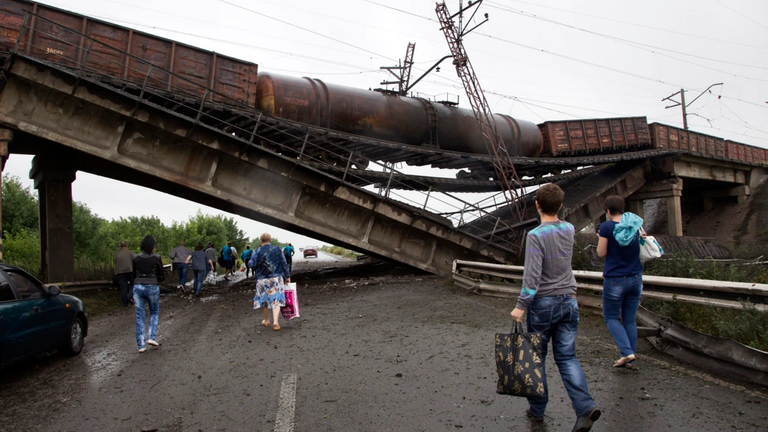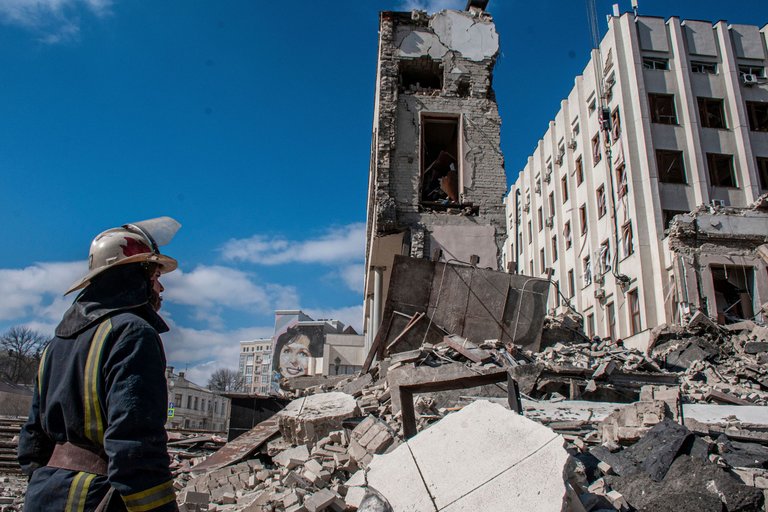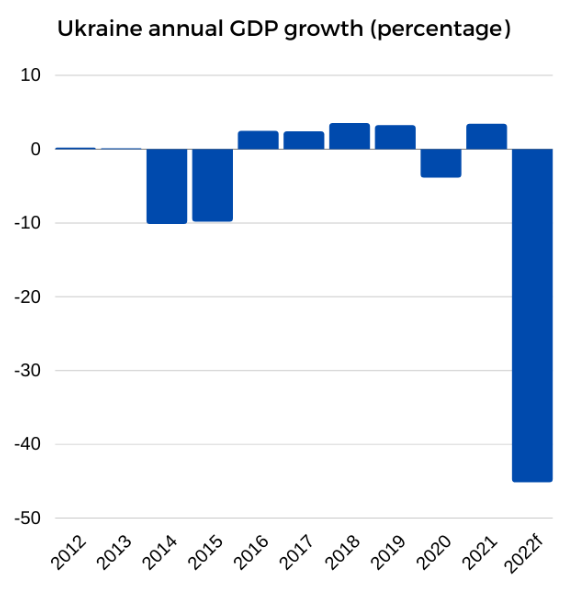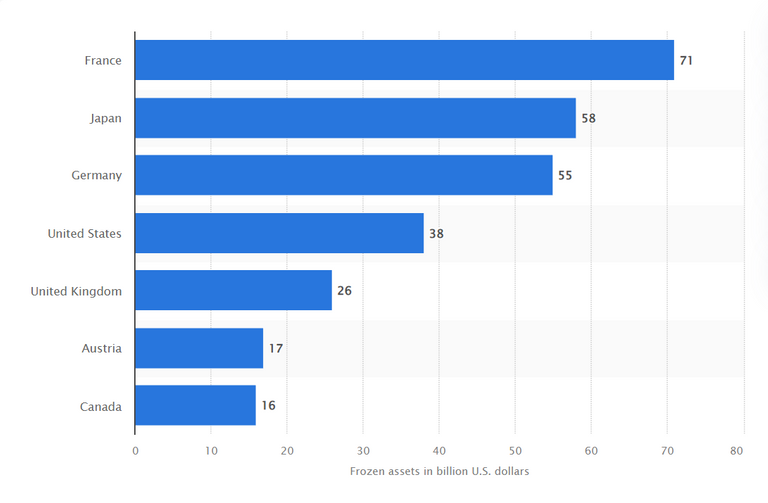
As you'd expect, Putin's invasion of Ukraine has caused an inordinate amount of damage to the country. Buildings, roads, and water systems have all been damaged, and Ukraine, which is expected to experience a 45% recession by 2022, just doesn't have the money for repairs. Recognizing these facts, some Western commentators have suggested that the West establish a recovery fund for Ukraine, possibly modeled after America's post-war Marshall Plan for Europe. So, in this article, we'll look at how much it would cost to rebuild Ukraine, whether the West should pitch in, and how any reconstruction effort might resemble the Marshall Plan.
Let's start by considering the cost of actually rebuilding Ukraine. According to analysis by the Kiev School of Economics from early April, the war has so far incurred some 100 billion dollars worth of damage to Ukrainian infrastructure. About 60 billion of this comes from damage to residential buildings and roads, and about 10 billion from damage to transport infrastructure. The Ukrainian government estimates that so far, more than 7,000 residential buildings have been damaged and two of the country's largest metallurgical enterprises have been destroyed. Worried about Ukraine, this 100 billion figures is almost definitely going to rise as the war continues, but infrastructure isn't even the only cost. Many, if not all, Ukrainian businesses will have had to halt operations or accept a revenue shortfall, and, as previously stated, GDP is expected to contract by 45% this year, according to the World Bank.

As you expect, this has pushed Ukraine's borrowing costs sky-high, which has made financing the war and everyday government much more difficult. Ukraine has obviously also suffered unquantifiable humanitarian costs. Tens of thousands of Ukrainians have died, with millions more fleeing into neighboring countries. It's also just an unfortunate fact that Ukraine might lose some of its territory in a peace settlement, depending on how Russia's attack on Donbass ends up playing out. Furthermore, rebuilding Ukraine will cost more than just repairing the damages incurred during the war, because when we say rebuild Ukraine, we don't just mean restoring Ukraine back to its pre-war state. We can't just repair infrastructure and move on. Ukraine will, for example, need a more powerful military than it used to have in order to insulate itself from Russian aggression going forward and this will cost more money.
Also, it doesn't make sense to just rebuild Ukraine's damaged energy infrastructure; it makes more sense to replace it with new zero carbon energy. For example, Ukrainian coal plants in Donbass have been damaged, and the area might even end up being annexed by Russia. So it doesn't make sense to replace these with more coal plants. It would make more sense for Ukraine to instead invest in zero carbon alternatives, especially if it still wants to meet its 2016 net-zero target. In pre-war Ukraine was also partially dependent on Russian energy exports, and while it stopped importing Russian gas in 2014, in 2020, Russia accounted for 70% of Ukraine's coal exports. Ukraine will need to divest away from Russian energy imports, which will obviously cost even more money. The same reasoning applies to Ukrainian institutions. Prior to the war, Ukraine was one of the most corrupt countries in the world according to Transparency International's 2021 corruption perception index, which placed the country 122nd out of 180 countries. The country is the second most corrupt in Europe, only behind Russia. Therefore, Ukraine's institutions and politics will need to be improved when they're rebuilt, not just replicated.

The point we're making is that rebuilding Ukraine doesn't just mean restoring it to its pre-war state; it also means improving it, and this will clearly cost more than just fixing up all the broken infrastructure. Obviously, because of all of these factors, the cost of rebuilding Ukraine is rather difficult to calculate. For starters, there are some massive numbers at stake here: 45 percent of GDP, hundreds of billions of dollars in damage, and thousands of lives, all of which are prone to error and feel almost too abstract to work with. Of these costs are also just unquantifiable; you can't put a number on the cost of repairing Ukraine's population in the same way you can with infrastructure, and that's part of the reason why estimates vary so wildly. According to the Center for Economic Policy Research, the figure ranges between $220 and 540 billion dollars. Government went even further, putting the figure at 600 billion dollars and admitting that this figure will rise even further to over a trillion dollars as the war continues to play out.
Whatever the true figure is, it's clear that Ukraine can't afford it itself. The Ukrainian government already has 14 groups working on reconstruction, and while in March they started issuing war bonds that Ukrainian citizens could buy to support the effort, it's just clear that they won't be able to scrape together all the money they need on their own. Ukraine's entire GDP in 2019 was 150 billion dollars, and it's expected to fall below 100 billion dollars this year. And tax revenues were even lower in 2019. They were just 40 billion. As we mentioned earlier, its borrowing costs are sky-high, so it just looks impossible to be able to cover the costs on their own. This has led both the Ukrainian government and various western commentators to call for the west to set up a recovery fund for Ukraine, possibly modeled on the Marshall plan.

Ukraine GDP forecast
The Marshall Plan, for those of you who don't know, was an American initiative enacted in 1948 to provide 13 billion dollars' worth of financial aid to Western Europe after the war. The program is widely credited with kick-starting Europe's impressive post-war economic recovery and providing the foundations for a lasting political relationship between Western Europe and the US. Obviously, a recovery fund in Ukraine would be much more expensive than the Marshall plan. The 13 billion dollars that the US sent in the Marshall Plan translates to about 115 billion dollars today, and it was spread out across 16 countries. So assuming that the total cost of rebuilding Ukraine comes to about half a trillion dollars, this means any reconstruction effort will cost more than three times the Marshall Plan, with all the money being directed at just one country. The point we're making is that if current estimates are anything to go by, rebuilding Ukraine will be expensive.
To give you even more context, the US's annual foreign aid budget is about 40 billion dollars, the EU's is about 60 billion and the UK is about 15. This means the western budgets will either need a massive increase or a complete redirection to foot that 500 billion dollar bill. Now it's worth saying that the EU does have other mechanisms for aids like the equitable transition fund and there are more creative mechanisms available like liquidating the 300 billion dollars worth of frozen Russian assets in order to reimburse Ukraine which both Canada and the US are currently considering. Nonetheless, the basic fact is that rebuilding Ukraine would require an unprecedented aid effort which begs the question, is it really in the west's interest to foot such a massive bill? Well, while it might be economically costly, it's worth saying that the political gains could be significant.

Value of assets of the Bank of Russia frozen due to sanctions due to the war in Ukraine as of March 2022, by country - statistia
If the Marshall plan is ended by a Ukrainian reconstruction fund, it could provide the basis for a long and lasting political alliance between Ukraine and the west. But perhaps the bigger question is whether it would even be sustainable. A Marshall plan for Ukraine would require years of cooperation between Ukraine and the West, as well as bipartisan support in countries such as the United States and the United Kingdom. History has shown that when times are tough, developed countries aren't too keen on big aid budgets, and while public sympathy for Ukraine is currently at an all-time high, you can imagine high-aid budgets becoming politically unsustainable in the future once Ukraine has fallen off the news agenda.